#my copy of gawain and the green knight !!
Explore tagged Tumblr posts
Text
The Green knight is like. Its about honour. Its about regret. Its about fear. Its about courage. Its about shame. Its about the cyclical nature of the world. Its about mirrors and parallels. Its about your mom and you. Its about death and decay. Its about choices. Its about magic. Its about trying to avoid the unavoidable. Its about aging. Its about changes you aren’t ready for but have to go through anyways. Its about chances you wanted but were too scared to take. Its about gently kissing and caressing dev patels face. Its about expectations. Its about disappointing people. Its about how you look back at all the things you couldve done differently and forward to the things that may come. Its about the unyielding but loving power of nature and life. Its about being a person.
#this is about the movie btw#ive also got a copy of the poem which is a lot more light hearted and primarily explores themes of queerness and what honour means#the green knight#gawain and the green knight#forest aesthetic#dark forest aesthetic#forest gothic#aesthetic#poetry#i could write essays#its my fave arthurian legend tbh#and A24 killed this shit like#its so beautifully done#idk if this even makes sense
140 notes
·
View notes
Text
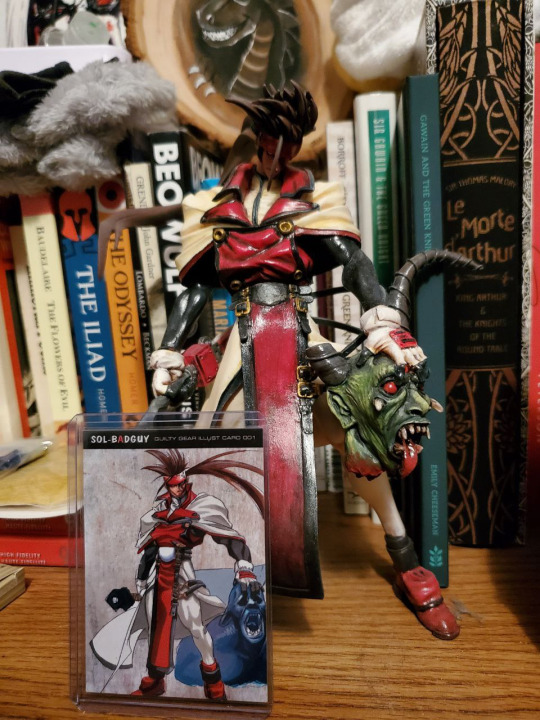

25 YEAR OLD MISSING LINK ORDER SOL BROCCOLI TRADING CARD DELIVERED TODAY!!!!!!!!!!!!!!!!!!!!!!!!!!
HOS GK behind it is by Nakayama Eiji
#photopost#I do indeed have my HOS gk set up guarding my 5 copies of Sir Gawain & The Green Knight it's true#Still need to 3D print the base for that figure but my Ender's been busy shitting out giant bloodscythe parts recently haha#HOS can stand on his own without a base though. I'm not in any hurry
76 notes
·
View notes
Note
Ask game: Top 5 green items in your house
i love this so much?? like i literally walked around looking for green things and it was so much fun. i was going to take pics of things but then i thought that was overkill so i will just be descriptive lol
my lil fire escape herb garden, which right now boasts parsley, sage, and dill 🍃 we were also growing a pot plant but it got way too big and then sadly perished in a thunderstorm
my stuffed junimo that i think emily sent me
similarly, the stuffed ikea broccoli that i'm certain emily sent me
my pistachio-colored electric kettle
the glittery hashtag meatball sign that my mother-in-law made for us to hang up in our entryway lol. it's only partially green but it counts!!
thank you for this!!!
ask me top 5 anything! 💚🐸🥦
#asks#thecouchsofa#honorable mentions to my book of irish folktales#my copy of gawain and the green knight !!#ask meme#top 5 lists
9 notes
·
View notes
Text
Reorganized my shelf too to fit some stuff better and declutter and realized the pic I took for twitter very clearly shows my two copies of house of leaves. Cant post this shelf anywhere I cant let people know im that fucking insane.
#txt#2 copies of house of leaves next to sir gawain and the green knight what sort of new mental illness are they concocting in my brain
10 notes
·
View notes
Text
arthurian cinema: a vibe collection
my rule of thumb when it comes to watching movies is "must a movie be 'good'? is it not enough for it to have a bit of a weird/trippy/artsy/horny/allegorical/gay vibe?" and thank god for that because arthurian cinema has this sort of vibe in spades! so here's an assortment of some arthurian films i've seen + a reason or two why they passed my nebulous yet specific vibe check:
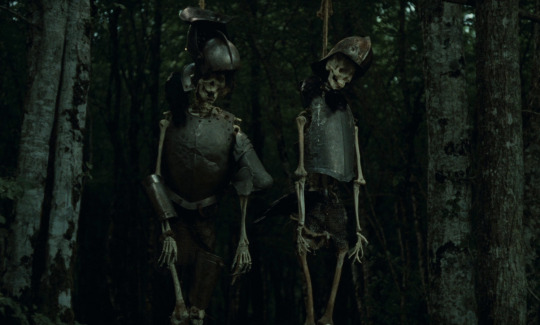
lancelot du lac 1974 is my #1 forever for the doomed repressed symbolism-soaked post-grail pre-camlann so-rigid-it's-camp atmosphere and the interpersonal dynamics between lancelot guinevere and gauvain the likes of which i haven't seen anywhere else outside of the texts

tristan et iseult 1972 is really just avant-garde performance art + the surviving copy is really rank which adds a je ne sais quoi... and congrats to tristan on his top surgery!

morgane et ses nymphes for the "my lesbian roadtrip led me to morgan le fay's realm and now she's obsessed with me" plot and the dreamy hazy eurotrash energies
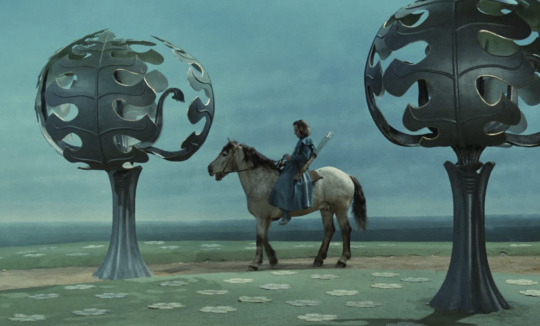
perceval le gallois 1978 has such kitschy surrealist teletubbies-esque visuals that it has nearly defeated me. i still haven't finished it. it's rare that a film feels like an assault on my eyeballs and yet i am compelled and i cannot look away
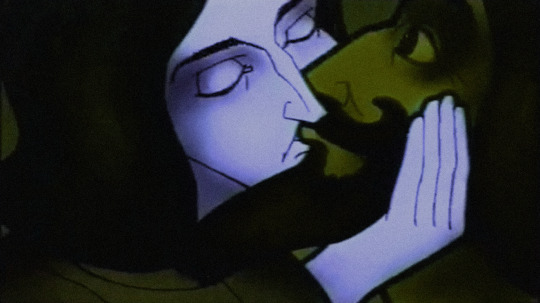
sir gawain and the green knight 2002 is a strangely horny stained glass animation that will give you motion sickness while saying bi rights over and over and over. it feels like a religious sunday cartoon. it won a bafta
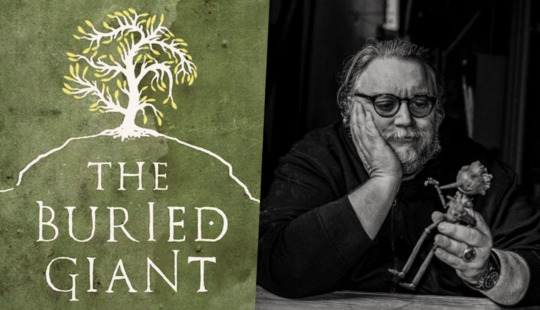
the buried giant – a beautifully atmospheric novel in its own right – is getting adapted into a stop motion film soon! i already know it will earn a spot on this list so consider this a place-holder
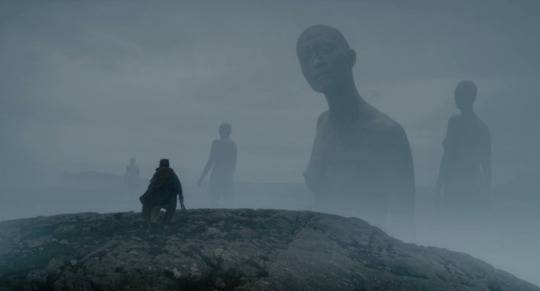
the green knight 2021 for the giants scene (and the 360-degree sequence of a tied-up gawain Losing The Game)
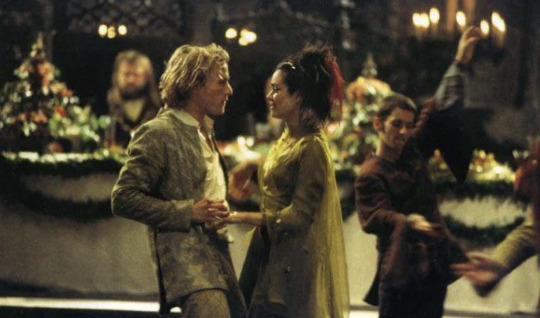
a knight's tale entirely because they dance to bowie's golden years
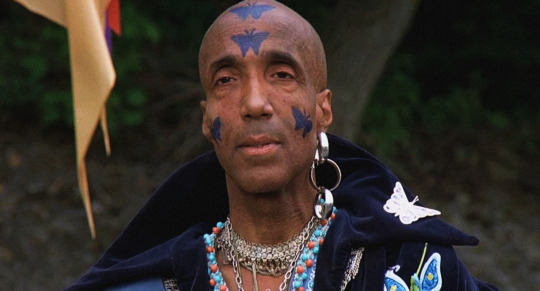
knightriders for the most charming merlin design i've ever seen and also for the whole knights jousting on motorbikes concept

monty python and the holy grail for just about everything but above all else the bit where they're animated and then the animator abruptly dies of a heart attack and then they stop being animated
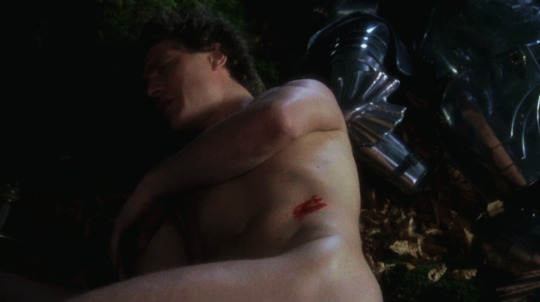
excalibur 1981 for everything as well but i cannot overstate the effect lancelot's dream where he wrestles his armor and homoerotically un-stabs himself had on me. i will never shut up about it
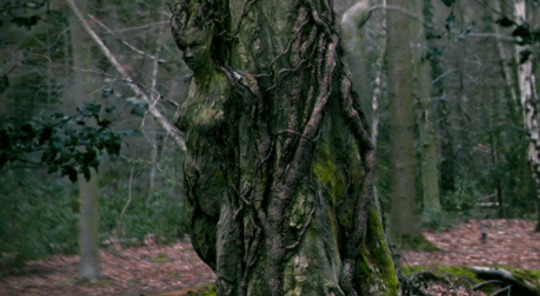
king arthur: legend of the sword just kidding i haven't seen this nor do i intend to. i'm just enamored with this 2-second shot of a tree girl and her tree titties and i think that everyone should witness her
#terry gilliam's fisher king almost made it on here but idk#its a better movie than some of these and i found it mostly-enjoyable and it simply didn't pass the nebulous yet specific vibe check#arthuriana#films#i was sooo tempted to add marika hackman's slime music video just to spread the gospel of lesbian knights wrestling & making out in the mud#but its ''not arthuriana'' or whatever (it is to me)
92 notes
·
View notes
Text
Today we found my husband's old copy of Gawain and the Green Knight from his university days. It has terrible, terrible 1980's cover art, coffee stains, and little notes in the margins that say things like Guinevere toughs it out or Arthur is painted as a foolish cuckold in my husband's handwriting but the handwriting is younger, it's familiar but not fully developed the way I know it. He's written his name inside the cover in faux medieval script. I didn't know it was possible to crush on the person your spouse was before you ever met them.
#arthuriana#husband#gawain and the green knight#eugene vinaver#medieval literature#i adore this man#mush
258 notes
·
View notes
Text

super special find at the second hand bookstore today! a copy of the 2008 Folio Society edition of Sir Gawain and the Green Knight illustrated by Diana Sudyka and translated by Simon Armitage!
very glad to have this in my ever-growing collection of green knight editions. Only gripe is that it is too tall to put on even the biggest of my book shelves...
#sir gawain and the green knight#sgatgk#medieval literature#folio society#gawain#the green knight#arthuriana#books#knave reads
133 notes
·
View notes
Note
Do you have any books or sources for learning Olde English? I want to write a medieval-based story but I don't know how to write the characters speak the language.
That depends -- when you say "Olde English" do you mean Old English, like pre-1066 English? That's pretty far from modern English and it's unlikely that readers will be able to understand it easily. If that's what you're looking for, the texts I was taught with are:
Bright's Anglo-Saxon Reader
Quirk's Old English Grammar
Sweet's Anglo-Saxon Reader
They're all from a while back -- and, as you can see, some use the now-deprecated term "Anglo-Saxon" -- so you can find older editions free in the public domain. More recent revised editions can generally be found in cheap paperback form. I believe there are some more modern textbooks that are quite good, but I haven't looked at them, and I don't know how affordable they are.
I have also consulted with Zoe (@meanderingmedievalist) on this, and she recommends Baker's Introduction to Old English, as well as the related resource Old English Aerobics:
The reason there are textbooks for this, though, is because you genuinely have to treat it as a foreign language. It's very different from modern English. As a sample, here's the beginning of Beowulf:
Hwæt! We Gardena in geardagum þeodcyninga þrym gefrunon hu ða æþelingas ellen fremedon. Oft Scyld Scefing sceaþena þreatum monegum maegþum meodosetla ofteah egsode eorle syððan aerest wearð feasceaft funden he þæs frofre gebad weox under wolcnum weorðmyndum þah oð þæt him aeghwylc þara ymbsittendra ofer hronrade hyran scolde, gomban gyldan þæt wæs god cyning.
So if you put a lot of it into a story for a modern audience, most of them will be a bit lost.
If when you say "Olde English" you mean "English that sounds archaic and medieval, but is comprehensible to a modern audience", you're probably looking for Middle English.
I don't have any direct references for learning the language there, as I was mostly taught through immersion (i.e., here's a Middle English text, read and translate it, now do another until you get a feel for it), but Zoe recommends Fulk's Introduction to Middle English, so that's a good bet if you don't want to go through that process.
However, I do think the "just read the texts" method also works fine -- especially since, if you're writing a medieval story, you'll want to read some of the literature anyway for inspiration. Here's what you can do to use that method outside of a classroom setting:
Step One: Get a Middle English text with a facing-page translation. Armitage's edition of Sir Gawain and the Green Knight is good for this. Read the Middle English text, referring to the Modern English translation on the facing page whenever you don't understand it. Do this with a pencil in hand, so you can annotate the text with definitions, translations, and notes about how the sentences work.
Step Two: Get a Middle English text for which modern translations exist. Don't get the modern translation. The Canterbury Tales works for this: it's a classic and you should be able to pick up a copy anywhere. The version on my shelves is Baugh's Chaucer's Major Poetry -- which is heavily footnoted with definitions, potentially saving some time with the dictionary -- but it doesn't really matter as long as it's in the original. Read it. Every time you don't know a word, look it up in the Middle English Dictionary (available free online, in searchable form, here) and write it down. Again, best to annotate directly on the page with a pencil. Trust me, it helps to do it that way. Once you're done, get a modern translation and check your work.
At this point, you'll probably have picked up enough of the language that you should be able to write in it to some degree, though you'll want to continue making reference to the Middle English Dictionary to make sure you're employing period-appropriate usage and spelling. If you have access to the Oxford English Dictionary (if you're at a university, you almost certainly do, otherwise check with your local library), use that to check when the words you're using originated -- the OED has that listed, and that'll keep you from accidentally dropping an 18th-century term into medieval dialogue. You can also use their Historical Thesaurus to find period-appropriate equivalents for terminology.
Optional Step Three: Keep reading more Middle English literature with the dictionary open, annotating as you go, to get additional practice. If you can get through Le Morte Darthur in the original (get the P.J.C. Field edition), I think you'll be set in terms of "writing convincing medieval prose". Not because it's particularly difficult -- it's late medieval, so the language is actually more modern than either of the texts mentioned in steps one and two -- but just because it's long, so you'll get a lot of practice working through it. As a bonus, reading Malory will familiarize you with lots of good knightly vocabulary in case that's the kind of story you want to write.
Optional Step Four: Read scholarly articles on Middle English language and literature to get a more in-depth understanding. Again, check with your local library, or if you're at a university, a university library will have a vast amount of resources on this subject you can browse through.
86 notes
·
View notes
Text
An Update on my Tolkien Collection

For @oneardentstudybuddy following your recent tags:

Not all of my collection is pictured because I couldn't fit the whole bookcase into the shot, it's also a MESS on the bottom shelves... (The top shelves are bad enough!) There's also books missing because I've lent them out to a friend or I'm reading them. However, I have:
5 editions of Lord of the Rings (3 in separate volumes, 2 in one volume)
6 copies of The Silmarillion (I thought I had more of these... I'm wondering if there's some missing from when I moved all my books?)
7 copies of The Hobbit (hilarious considering I'm not that fond of the Hobbit, I'm also definitely missing books, time for a hunt round the house 😱😭)
2 copies of The Great Tales and the Unfinished Tales (one paperback, one hardback, Beren and Luthien is signed by Alan Lee!)
The Fall of Numenor
The Nature of Middle Earth (on my nightstand as I'm reading it)
The Letters of J.R.R. Tolkien
The Lord of the Rings: a Reader's Companion
The History of Middle Earth volumes 1-4, 7-8, 10 (I don't know why I don't have the other volumes, all in paperback, I'm eyeing up the new hardbacks though to complete my collection)
The Art of J.R.R. Tolkien
The Music of the Lord of the Rings Films
The Making of Middle Earth
Tales from the Perilous Realm
Beowulf
The Fall of Arthur
Gawain and the Green Knight, Pearl, and Sir Orfeo
The Complete Guide to Middle Earth
The unabridged audiobook of The Hobbit and The Lord of the Rings read by Rob Inglis
Theatrical cut of the Lord of the Rings films (watched once)
Extended Edition of Lord of the Rings films (watched obsessively)
Theatrical cut of The Hobbit films (watched occasionally)
Extended edition of The Hobbit films (watched once and regret it)
Howard Shores complete recordings for all three films
The standard soundtracks for LotR and The Hobbit films
All of the visual guides and companion books for the films, there's far too many of these to list!
Too many LotR themed candles, Rivendell is my favourite
A Weta print of the Argonath
A concept art print of Rivendell
A print of Alan Lee's illustration of Edoras
And, of course, my hobbit hole travellers notebook covers

This was slightly unhinged, sorry!
I have a lot of ebooks too but we'd be here until next week - Tolkien scholarship is vast 😅 I'll happily do better photos of anything you're particularly interested in! I love sharing Tolkien!
#books#jrr tolkien#lord of the rings#the silmarillion#the hobbit#tolkien collection#this has definitely grown since i last shared this bookcase#it also doesn't all fit onto this bookcase anymore#long post
18 notes
·
View notes
Text





Sir Gawain and the Green Knight, translated by Jessie Weston and typeset by @mourningmountainsbindery for the Renegade Bindery tiny books exchange! Casebound in octavo with a slipcase - I like to do slipcases whenever I post copies, it alleviates some of the 'what if it gets bumped around in the mail?!' anxiety, and looks really nice anyway.
It ended up as a really cute little volume. I've been reading it on the bus this week, and I always feel super fancy when I pull it out of the case and put on my glasses.
#bookbinding#my books#perfectly normal books#sir gawain and the green knight#not fanbinding#i briefly considered binding it in hot pink and gold just for fun but really green was the only option here#i'll do barbie-edition sir gawain some other time
127 notes
·
View notes
Text

our Dungeons and Dragons party travelled to the strange fae world of Avalon, where all the world's a stage! We were cast in unfamiliar roles (the Baddies of classic Arthurian legend), and had to navigate our parts on our real quest to destroy the Round Table — and save the world, of course! My PC was turned into The Questing Beast.
(I wanted to copy the art style of the lithograph illustrations by Virgil Burnett in my beloved 1983 copy of Sir Gawain and the Green Knight)
#dungeons and dragons#arthurian legend#arthurian mythology#Arthuriana#dnd art#literally what the fuck do I tag this. this one goes out to all my fellow English grads and old literature freaks!#calleach's ward#illustration#ranha
9 notes
·
View notes
Text
I didn't exercise today because I didn't sleep very well and now I've taken a little too much of a weed gummy BUT! I have dry oat clusters AND my copy of Begin + Begin illustration card made it to storage so after they're consolidated... I will win >:)
#textpost#drugs cw#Tillman helped me find scans of the original Sir Gawain & The Green knight manuscript today#I need to get it printed so my 6th copy of Sir Gawain &TGK is a manuscript bootleg#I forgot the word for storage and almost called it an outpost lmao
14 notes
·
View notes
Text
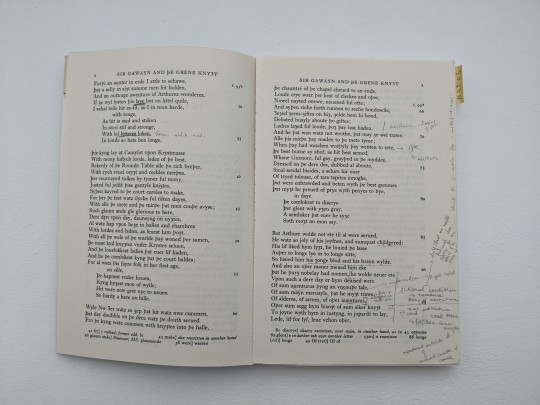

My mother studied what was at the time known as Germanic languages and has since been rebranded to language & literature studies which basically means she has a library about three times the size of mine (especially since she, unlike me, is unable to get rid of books) and of course I deeply enjoy perusing said library and found her school copy of Gawain & the green knight full of her notes. Very cool shit.
#am probably gonna do a media studies masters program which is derived from lang&lit but like#sometimes i do wish id gone into lang & lit instead of art... theres just a bit too much focus on lang unfortch#my mom studied english dutch & german though so some books i unfortunately cannot read#her first language is also french so i cant read those either unless i try very hard but fortunately i dont usually care for the french ones#ANYWAY. thought this would interest the hashtag studyblrs amongst you
61 notes
·
View notes
Text
Oct-Nov-Dec Reads
Sorry I was in the trenches known as university 🫡
Read:
As You Like It by William Shakespeare (for class): 3/5☆ Not one of my favorite Shakespeare plays but still fun
Richard II by William Shakespeare (reread for fun): 5/5☆ Devoured this in one sitting in between a class and a screening <3 my fav Shakespeare play <3
Corpses, Fools and Monsters by Willow Maclay and Clay Gardener (for fun/partially for class): 4.5/5☆ my cinema studies advisor got me a copy of this because I am trans and love film but also because we were going to read a small section of it on Brian De Palma's Dressed to Kill for Hitchcock class. Read this really fast, very approachable (though maybe of detriment to the prose or the depth of its content)
Wolf in White Van by John Darnielle (reread for fun): 5/5☆ One of my favorite novels, makes me insane, slays so hard, etc etc. Made me want to reread Darnielle's other two novels soon
Sir Gawain and the Green Knight translated by Simon Armitage (reread for class): 4.5/5☆ Fun!! I love you Gawain my good friend Gawain
The Mimicking of Known Successes by Malka Older (for fun, on audio): 3/5☆ Not bad, picked it up because its quite short and a sci-fi (supposedly Holmesian) mystery with a sapphic romance but its not as well-written or as satisfying as I wanted
The Christmas Guest by Peter Swanson (for fun, on audio): 3/5☆ A fine mystery, I liked the twist, but up until that point the narrator was insufferable
Currently Reading
A Master of Djinn by P. Djèlí Clark
Women, Race, & Class by Angela Y. Davis
Star Trek: The Motion Picture by Gene Roddenberry
The Return of Sherlock Holmes by Arthur Conan Doyle
Up Next:
Ada, or Ardor by Vladimir Nabokov
The Waves by Virginia Woolf
Universal Harvester by John Darnielle
#aj reads#wondering if i should make a reading sideblog. for funsies. i lowkey think i'd be bad at using a sideblog though
2 notes
·
View notes
Note
hiii jules 10 16 32 and um 43 for the book asks if you'd like <3
hiiiii reid my love!!! kisses xoxo <3 i am also realizing now that it is somewhat hard to answer these questions when half of my books are still in a box from when i moved in. and yes that was sixth months ago i don’t want to talk about it. nevertheless i persevere
10. favorite classical literature: ooh okay here are some!! jane eyre, nightwood, giovanni’s room, if beale street could talk, the color purple, mother night, sir gawain and the green knight, lancelot: the knight of the cart, medea, we have always lived in the castle, all my sons, pride & prejudice, northanger abbey
16. favorite trilogy: broken earth trilogy foreverrrr okay <3 no i haven’t even read the third book yet but i still know it’s the best.
32. favorite author(s): i’m really bad at reading a lot of books by the same author and i don’t think i have one stand-out favorite but here are some ppl i enjoy!! kurt vonnegut, jane austen, shirley jackson, n. k. jemisin, helen oyeyemi, maggie stiefvater, mary oliver, ellen kushner, jeanette winterson, megan whalen turner, tamsyn muir, james baldwin, nghi vo
43. book i own in the worst physical condition and what happened to it: i wish i had an interesting answer to this but i think it’s my copy of gottfried von strassberg’s tristan. i ordered it used and it just came in pretty bad condition. it has one of those crunchy covers that you can just snap pieces off of that is missing several pieces and being held together by some tape
the ask game 📚
6 notes
·
View notes
Note
In a post that was… a long time ago, you put in the tags:
“i JUST wrote an essay on this omfg i have SO many thoughts about sir gawain and the green knight”
The post was about how Gawain literally had no way to win in SGATGK. You were talking in the tags about shame culture and the instability of the moral culture and symbols and identity and the like, and I was wondering….Do you have a link to that essay or something?
If not then that’s totally fine, I just ALSO have many thoughts on sir Gawain and the green knight and love not only the poem but the essays and academic articles and stuff surrounding it, and that essay honestly sounds really interesting and cool! So I thought I’d ask, but yeah!
Hey Anon! First of all, thanks so much for coming into my inbox to talk Sir Gawain with me - a very unexpected but very welcome surprise! I'd completely forgotten about that post I reblogged, but yeah, I took a Middle English paper in my second year of uni, and the Sir Gawain essay was my favourite one to research all term. It's just such a fun poem, and like you said, there's so much great discussion to delve into for it. It's been a little while since I thought about it though, so it's so fun to have a reason to shift my brain back into medieval mode again!
It was just a weekly essay (we had to write an essay each week on a different text/author/group of texts), so it was rather frantically researched and wasn't something I was able to spend loads of time on. I don't think I came to any particularly new or interesting conclusions, and I didn't post it anywhere or anything. That said, given that it's pretty short, I'm happy to copy and paste it here for you if you'd like to read it! Like all my uni essays, it was written the day before the deadline in a slightly sleep deprived haze, so it's not the best thing written on Gawain by a long shot, but it'd be lovely to have someone outside of my supervisor read it! Obviously just please don't use it anywhere or plagiarise it, but I assume that goes without saying lol
If you do get around to reading it, I'd love to hear your thoughts! But no pressure at all ofc - honestly it's just super nice to be asked! I'll put it below a read more, along with my sources - thanks again for the lovely message anon :)
‘For man may hyden his harme, bot unhap ne may hit, For there hit ones is tached twynne wil hit never.’ What do you understand to be the meaning and significance of Gawain’s last words?
Despite Gawain's confidence in asserting the green gridle as a signal of his fundamentally flawed nature, Sir Gawain and the Green Knight deliberately complicates the reader's ability to interpret the girdle - and by extension, the poem's moral - in such easy metaphorical terms. Gawain's initial symbol, the pentangle, embodies an honour system which sees morality as intertwined with reputation, making Gawain's apparent goodness into a static symbol whose worth depends on its ability to be interpreted by others. By replacing it with the girdle, the poem alludes to the instability of a community-based chivalric moral code. In offering the reader multiple interpretations of the girdle, with Gawain's held in no higher narrative esteem than Arthur's or the Green Knight's, the poem suggests the limitations of relying on community for moral validation, which ultimately leads to a performance rather than practice of morality, and therefore stunts any opportunity for personal growth.
Gawain’s certainty in labelling the girdle a metaphorical scar, to ‘remorde to myselven/ The faut and the fayntyse of the flesch crabbed’ (2434-35), is immediately challenged by two alternative perspectives – the Green Knight’s, and Arthur’s.[1] The Green Knight suggests Gawain take the girdle as little more than a trophy, ‘a pure token/ Of the chaunce of the Grene Chapel at chivalrous knightes.’ (2398-99), ‘pure’ acting in direct antithesis to the charge of sin that Gawain lays against it. Arthur and the court, meanwhile, have an emotionally opposed reaction to Gawain, greeting his morose confession by ‘Laughen loude thereat’ (2514), and appropriating Gawain’s symbol of personal shame into one of communal honour: ‘For that was accorded the renoun of the Rounde Table,/ And he honoured that hit had evermore after.’ (2519-20). The poet presents the reader with three inharmonious definitions, with no individual appearing the obvious source of authority. Thus, Gawain’s attempt at using the girdle to signify a universal truth in his aphoristic statement, ‘man may hyden his harme, but unhap ne may hit’ (2511) is radically undermined. Through offering, and refusing to discredit, alternating interpretations, the Gawain-poet makes his own description of the girdle’s ‘abelef as a buderyk bounden by [Gawain’s] side’ (2485) ironic in the passivity of its phrasing – Gawain may say that ‘unhap ne may hit’, but Arthur’s swift reinterpretation of the girdle repositions it from absolute symbol to simply a belt that Gawain has tied to suit his subjective purposes, and may just as easily untie. This ending marks a significant transformation for the reader’s understanding of the Romantic world Gawain inhabits, previously one in which symbols and epithets can be interpreted to indicate moral truth about an individual; a transition made clear in the movement from the pentangle as Gawain’s symbol, which Ralph Hanna describes as ‘the emblem of a world where meaning is clear and exemplary’ to the girdle, ‘to which meaning must be assigned’.[2] The Gawain-poet upholds the pentangle for its symbolic potential, pausing the narrative to interject, ‘And why the pantangel apendes to that prince noble/ I am in tente you to telle’ (623-24). The and the details provided in relation to the pentangle – ‘Hit is a synge that Salomon sette sumwhyle’ (625)’, ‘Englych hit callen/ Overal, as I here’ (629-30) appeal to the desire for a symbol with absolute meaning. The interpretation that follows of the pentangle’s application to Gawain, representing his five virtues, associates the accuracy of historical and linguistic information about the symbol with the apparently also objective information it relays about Gawain’s moral character. As Putter and Stokes suggest, ‘ethics and aesthetics come very close together in this poem’; in a reputation-based society, a kind of metaphorical vision is encouraged, which allows symbols like Gawain’s pentangle to be correctly interpreted as indicative of his nature.[3] Thus, the Gawain-poet provides the reader with the girdle as an alluring signification of an absolute moral truth, only to complicate this moral to such an extent that the girdle comes to signify the opposite, replacing the pentangle’s moral idealism and certainty with the suggestion that morality may be subjective.
Fitting to his interpretation of the girdle, the Green Knight disdains the kind of performative morality that underlies the reputation-based structure of Arthur’s court, associating it with the pride he has apparently come to test. Thus, he announces, ‘What, is this Arthures house […]. That all the rous rennes of thurgh ryalmes so mony? Where is now your sorqudrye and your conquests[..]/?’ (309-311). The Green Knight’s condescending tone relies upon the inevitable tension between the hyperbolic tales he is aware of, and the disappointing reality. There is a metatextual element to this speech, as the contemporary reader, too, would have heard tales of Arthur’s court’s ‘conquests’, and thus what is within the text a challenge to the pride of Arthur’s court becomes an implicit challenge of the implausibility of the Romance genre. As Ad Putter suggests, in Sir Gawain, the poet appears to deliberately use this fantastical genre to pose ‘an interpretative challenge […] how can we take it seriously?’[4] His response is to explore the psychological ramifications of existing as a character within this canon. As Gawain’s despair at the end of the poem indicates, this mythological society in which reputation is paramount has a fragile moral core. When Gawain flinches during the beheading scene, the Green Knight chastises him by saying ‘Thou art not Gawan’ (2270), alluding to his famed reputation. But what this truly reveals is that no one can be ‘Gawan’, who would not fear his head under a falling axe – within a genre predicated on hyperbolic acts of knightly courage, the Gawain-poet radically asserts the humanity that underlies Gawain’s character and makes living up to his generic reputation impossible. In doing so, the poem not only further undercuts Gawain’s shame at not fulfilling this reputation, but it discredits the entire notion of morality based on chivalry – based, fundamentally, on how good one is judged to be by others, rather than by an internalised moral compass. As A.C. Spearing suggests, the ramifications of this society manifest in a ‘criteria of conduct […] not fully internalized’: thus, Gawain ‘fails to recognize’ that his initial retention of the girdle ‘is a sin’ until it infringes on his reputation – that being, until the Green Knight reveals his knowledge of it.[5] Like Arthur, who responds to the Green Knight’s challenge of the court’s reputation by blushing – ‘The blod schotte for schame into his schyre face’ (317), Gawain, caught out in his lie, feels ‘All the blod of his brest blende in his face,/ That all he schrank for schame’ (2371-72). Their identical responses betray how Gawain’s embarrassment at his contradicted reputation, rather than actual feelings of moral guilt, lie at the core of the shame he associates with the girdle.
The poem thus exposes the flaws of a communal morality system, in which morality becomes more rigid and absolute – either the individual does, or does not, maintain their idealised reputation. Hence, Gawain’s assertion that if he is flawed, he must be fundamentally flawed: ‘Now am I fauty and false, and ferde have ben ever’ (2382). In this sense, the poem’s ending is further unsettling, as Arthur’s absorption of the girdle as a performance piece into the mythos of the court signifies his ignorance as to the dangers of this [MS1] structure. He continues to assume an externalised identity predicated on reputation, and as such, will continue not to scrutinise himself internally. Gawain may view the girdle as a metaphor for shame, and Arthur for honour, but, as David Aers notes, ‘none of this is of much consequence since nothing much will change anyway’; the absolutism of the Arthurian court prevents moral development.[6] The poem’s ending becomes bathetic, as the self-destruction inherent to the Arthurian court is stressed in the characters’ ignorance to their need for moral progression. Indeed, this is made all the more tragic as Gawain has already demonstrated within the poem that he can progress towards his idealised reputation, even if he can never truly fulfil its requirements. When he initially places his head down to receive the Green Knight’s blow, Gawain ‘[shrinks] a little with the schulderes for the scharp yrne’ (2267). As the Green Knight notes, such an act is contrary to his hyperbolically brave reputation, as ‘Gawan […] that is so good holden,/ That never arwed for no here.’ (2270-71). However, Gawain’s response demonstrates his ability to grow towards this role, as he determines not to flinch a second time, and successfully ‘graythly hit bides and glent with no member’ (2292). As Ralph Hanna suggests, the beheading scene is heavily charged with symbolism connoting rebirth, from the New Year setting, to the description of Gawain ‘Never syn that he was burn born of his moder/ [….] half so blythe’ (2320-21), to the spilling of his blood onto white snow, which Hanna calls ‘a tabula rasa on which Gawain must learn to write what he […] is now.’[7] If Gawain has emerged from a metaphorical death morally absolved and able to discover himself anew, then the positive potential of this revelation is immediately squandered in his curt refusal of Bertilak’s invitation back to his castle. His identity is still wholly externalised, and therefore his first instinct upon gaining an apparent greater self-understanding is to return to the court to vocalise it.The Arthurian court has a holistic and restrictive grip on individual identity in Sir Gawain, inescapable not because there is no opportunity to do so, but because the knights themselves – represented in Gawain and Arthur’s definitions of the girdle as still performatively signalling their reputations, just as the pentangle did – are ignorant of the very ways in which their potential is stunted by the structures they inhabit.
In showing the multiple, often conflicting meanings the girdle is given, the poem uses Gawain’s quest of self-discovery to destabilise the very moral structure at the core of the Arthurian court. In doing so, Sir Gawain and the Green Knight suggests the limitations of an external moral compass, and instead encourages the cultivation of the kind of more nuanced, internalised mortality that Gawain fails to realise.
Sources I quoted from: These are definitely worth reading in their own rights, since they express everything I had to say, and do so far better than second-year me ever could! You might have already read it, but if not, I'd particularly recommend the Spearing. I loved his interpretation, and it ended up forming most of the basis for my argument.
[1] The Works of the Gawain Poet: Sir Gawain and the Green Knight, Pearl, Cleanness, Patience, ed. by Ad Putter and Myra Stokes (London: Penguin Classics, 2014), p.401; all further references to this text will be made in the body of the essay.
[2] Ralph Hanna III, ‘Unlocking What’s Locked: Gawain’s Green Girdle’, Viator, 14 (1983), 289-302 (p.290).
[3] Putter and Stokes, ‘Foreword to Sir Gawain and the Green Knight’, The Works of the Gawain Poet, p.246.
[4] Ad Putter, An Introduction to the Gawain Poet (London; New York: Longman, 1996), p.45.
[5] A.C. Spearing, The Gawain-Poet; A Critical Study (Cambridge: Cambridge University Press, 1970), pp.224- 25.
[6] David Aers, ‘Christianity for Courtly Subjects: Reflections on the Gawain-Poet’ in A Companion to the Gawain-Poet, ed. by Derek Brewer and Jonathan Gibson (Woodbridge, Suffolk: D.S. Brewer, 1997), p.99.
[7] Hanna, pp.295-96.
#asks#life stuff#need to change that tag to something more fitting#like...idk....#talking about stuff#or something#anyways thank you anon! i hope you enjoy :)#lol love that the first place ive ever posted an essay of mine is tumblr#feels fitting tbh feels right#i still havent watched the dev patel green knight#shameful of me ik#man maybe i should reread it now#middle english i miss youuuu#for our paper the eng department asked us all to teach ourselves middle english and then just proceeded to teach us as if we were fluent#which was kinda hilarious ngl#some of the stuff was pretty intuitive but some of it was uh....less so#the putter and stokes edition has really good explanatory notes though#i owe them a lot lmao
2 notes
·
View notes